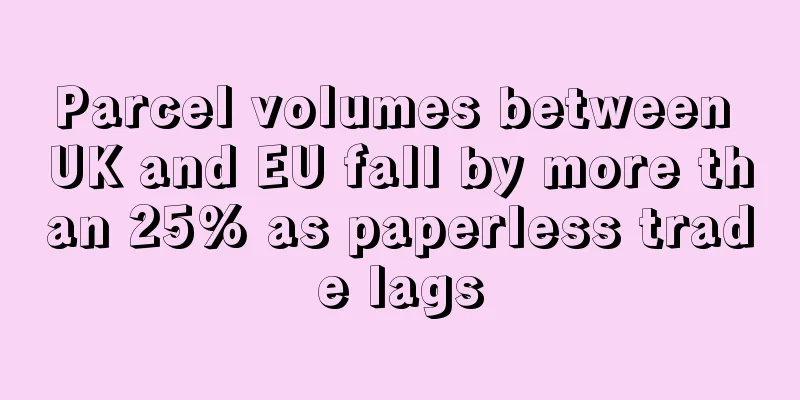Parcel volumes between UK and EU fall by more than 25% as paperless trade lags

|
Due to the aftermath of Brexit, barrier-free trade between the UK and EU countries came to an abrupt end. British traders had to face sudden additional customs requirements and unexpected costs, and with the widespread impact of the epidemic, British traders had little time to recover from the peak in 2020. For most people who continue to ship, the biggest challenge is undoubtedly data. The most troublesome thing is the mandatory customs data required for customs clearance and whether there are data errors, which is one of the root causes of the huge backlog and confusion.
By now, customers in the UK and EU have grown accustomed to the disappointment of goods arriving late or not at all, but what is more shocking is the revelation that data on individual shipments was entered manually by customs officials, delaying the time it takes for goods to clear customs.
The message behind this is that as online retailers’ understanding of the data required for customs clearance continues to improve, their adoption of paperless transaction tools seems to be lagging. That is, tools for capturing mandatory data, such as EORI numbers, tools that make manual data entry and physical documentation redundant in most cases. These tools can reduce the risk of human error, speed up cross-border customs clearance, and ultimately lead to happier customers.
Some argue that Brexit has brought into focus some long-standing restrictions that have made it difficult for UK e-commerce businesses to expand international sales, whether it is a lack of in-house expertise or the software tools needed to calculate duties and taxes and enable paperless trade.
Some people do believe that some British companies lack the software or knowledge to send products to countries outside the EU, and as a result these businesses are missing out on huge opportunities. Compared with countries outside the EU, the UK's trade with non-EU countries is slowly shrinking, and the world's fastest growing market is not in the EU, which is undoubtedly a huge wake-up call.
Perhaps too many British people have been content with the comfortable EU market for too long because it is less challenging and easier for them. But in a fast-changing world, businesses need to diversify their risks. After the 2008 economic crisis, an important factor in the EU's economic recovery was that it favored internal trade. This also meant that since all EU countries were hit at the same time in the epidemic, it had almost no way to restart. logistics Cross-border e-commerce market Europe |
Recommend
E-commerce demand increased by 104% year-on-year! BBW in the United States accelerates digital transformation
Build-A-Bear Workshop ( BBW ), an American plush ...
What is SuperSync? SuperSync Review, Features
SuperSync is a unified platform for high-performan...
What is ConnectBooks? ConnectBooks Review, Features
ConnectBooks automates accounting for Amazon, Wal...
What is Avito.ru & Avito.ru Review
Avito.ru is a well-known Russian classified infor...
What is Haisutong Cross-border Express? Haisutong Cross-border Express Review, Features
Xiamen Haisutong Cross-border Express Co., Ltd. i...
The scale of e-commerce exceeds 400 billion, Temu and Alibaba have tapped into new markets!
At the end of November 2024, it was announced tha...
Loss of 570 million in one year! Youkeshu's parent company issued a performance correction announcement
Some time ago, major listed companies released th...
ChatGPT banned accounts on a large scale, sellers: trial cards expired!
From sellers to logistics companies, from writing...
What is lovehedone? lovehedone Review, Features
Lovehedone is an e-commerce platform focusing on h...
Bigo Live partners with Indonesian e-commerce company 99Koutlet to host first live streaming event
Bigo Live, the world's leading live streaming...
What is Wealthfront? Wealthfront Review, Features
Wealthfront is an American automated investment s...
What is Hungryroot? Hungryroot Review, Features
Founded in 2015 by Ben McKean and headquartered i...
What is ECPP? ECPP Review, Features
Shenzhen Viking City Information Technology Co., L...
What do Americans want to buy after the lockdown? Lipstick, dresses, wedding gowns...
So far, more than 300 million doses of COVID-19 v...
With more than 6 million independent sellers and a GMV of $25 billion, Amazon is still able to keep up
According to Marketplace Pulse, there are nearly ...









